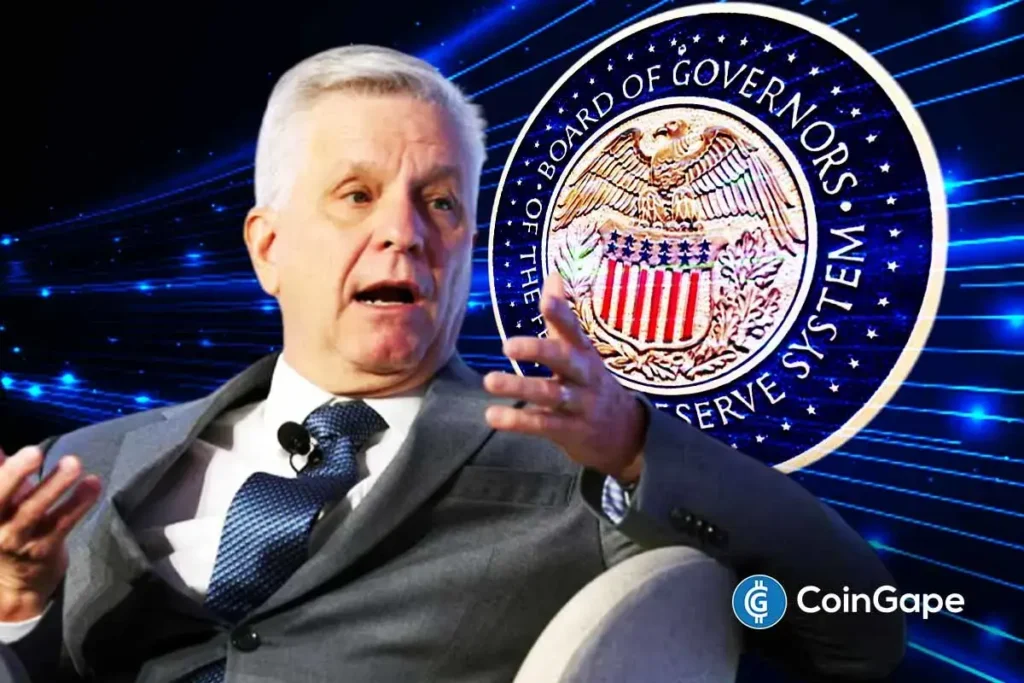Fed Considers Rate Cut Amid Economic Concerns
In recent statements, Federal Reserve Governor Christopher Waller has hinted at the possibility of a Fed rate cut sooner than anticipated. During a Federal Reserve Bank of Dallas event, Waller suggested that the current interest rate might be too high and indicated that the Federal Open Market Committee (FOMC) could consider lowering rates as early as this July. His remarks come on the heels of a "wait-and-see" approach emphasized by Fed Chair Jerome Powell, raising questions about the Fed’s monetary policy direction.
Waller’s Insights on the Fed’s Current Stance
Waller pointed out that the existing policy rate remains restrictive, suggesting that it might be time for a reevaluation. His assertion follows the release of the June FOMC minutes, which revealed concerns among committee members about potential inflation resulting from tariffs imposed by former President Trump. Nevertheless, Waller advocated for the Fed to overlook tariff impacts and possibly initiate a rate cut.
This isn’t the first instance of Waller advocating for a July cut; he had expressed similar sentiments shortly after the June FOMC meeting. With inflation pressures reportedly less concerning, Waller believes the time is ripe for a reduction in interest rates.
The Trump Effect on Rate Cut Discussions
Interestingly, Waller’s viewpoint aligns with calls from Donald Trump, who has been vocally pressing the Fed for a "rapid" interest rate reduction. The former president suggested that there’s no immediate inflation threat and pointed to the performance of Bitcoin and the stock market as indicators of economic strength deserving of lower interest rates. Trump’s approach has raised eyebrows within the financial community, especially as he called for a significant cut of 300 basis points.
Despite these calls, Powell remains firm in his stance, asserting that the economy is stable enough to warrant a cautious approach to rate cuts. His position has stirred frustrations from Trump, who has even suggested Powell should resign due to his reluctance to lower rates.
Market Sentiment Against a July Rate Cut
Despite Waller’s optimistic remarks, current market sentiment appears to be leaning toward maintaining the status quo. According to Polymarket data, there is a staggering 95% probability that the Fed will keep interest rates unchanged at the upcoming July 30 FOMC meeting. This skepticism is further echoed by data from CME FedWatch, which shows a 93.3% likelihood of interest rates remaining steady.
The trend within the market shifted dramatically following the release of robust US employment data, indicating a resilient labor market. Many traders are now convinced that these signs are sufficient to delay any immediate rate cuts.
Diverging Perspectives
The contrasting opinions within the Federal Reserve and the broader market illustrate a complex economic landscape. While Waller and Trump advocate for immediate action in light of perceived economic strengths, Powell emphasizes the need for caution and thorough analysis of ongoing economic factors, such as tariffs. This divergence is crucial as the Fed navigates its next steps amidst various economic pressures.
The ongoing debates surrounding interest rates will likely have significant ramifications for various sectors, including technology, finance, and real estate. Investors will be watching closely for any signals from the FOMC that could influence their strategies and investment decisions.
Conclusion
Overall, as discussions regarding a potential Fed rate cut unfold, various stakeholders are weighing their options and strategies. With key figures like Christopher Waller and Donald Trump advocating for a proactive approach to interest rate reductions, the situation remains dynamic. However, current market trends suggest that a rate cut in July is unlikely, as solid employment figures continue to support the notion of maintaining steady rates.
As this narrative develops, keeping informed through credible sources is essential for anyone interested in the financial markets. The interplay between Fed policy, market sentiment, and economic indicators will shape the landscape for the foreseeable future.


